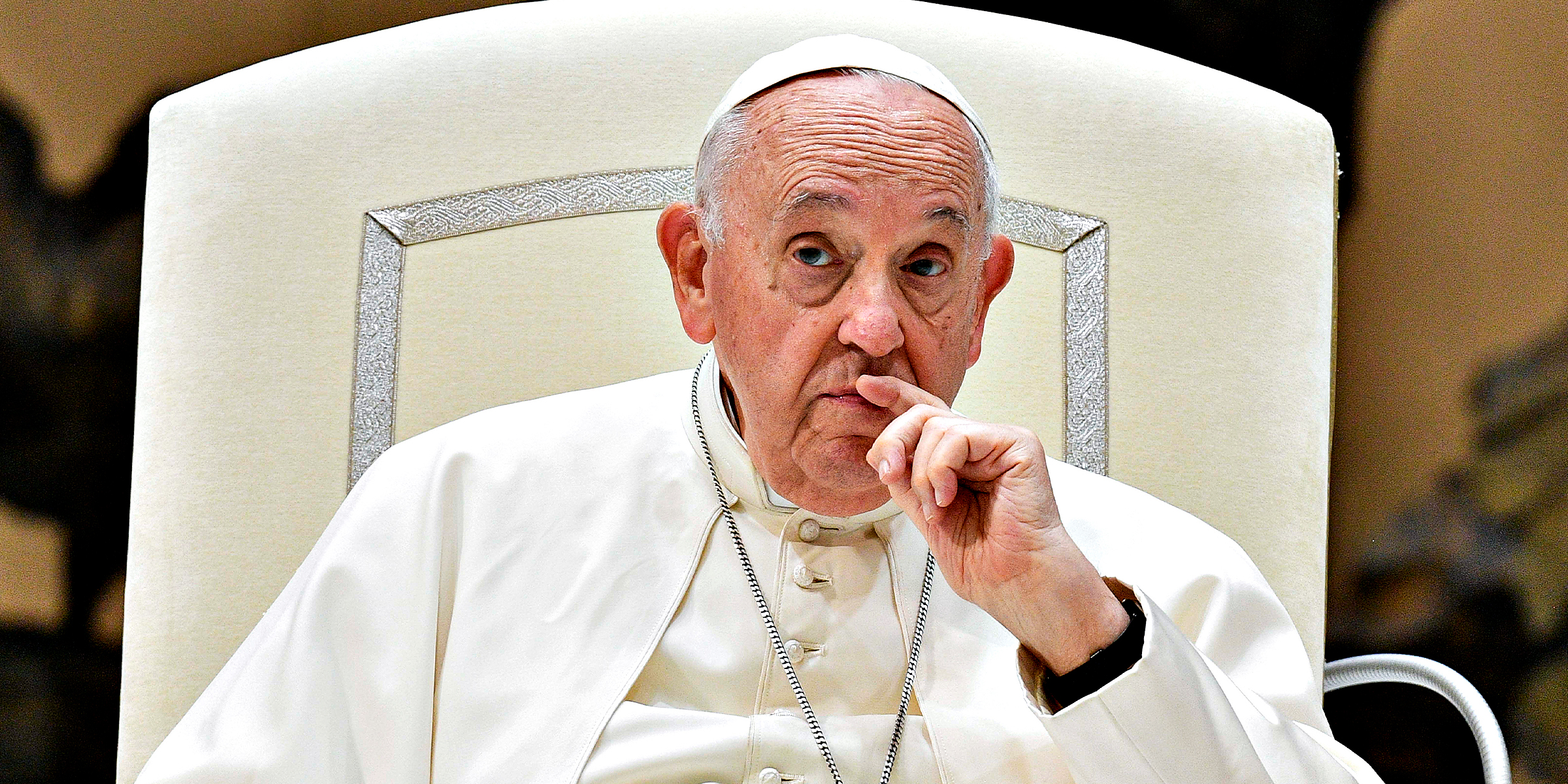
Why Pope Francis' Ring Had to Be Destroyed After His Death – Inside the Pontiff's Funeral
Before a pope is buried, the Church carries out a series of traditional rites that mark the end of his papacy. Among them is the defacing of his ring — a symbolic gesture that signals his authority has formally ended.
In the heart of Vatican City, beneath the dome of St. Peter’s Basilica, Pope Francis was laid to rest with ceremonies that blended centuries-old tradition and his trademark humility. He died at age 88, remembered not only for his calls to reform the Church, but also for his quiet devotion to the poor and the marginalized.
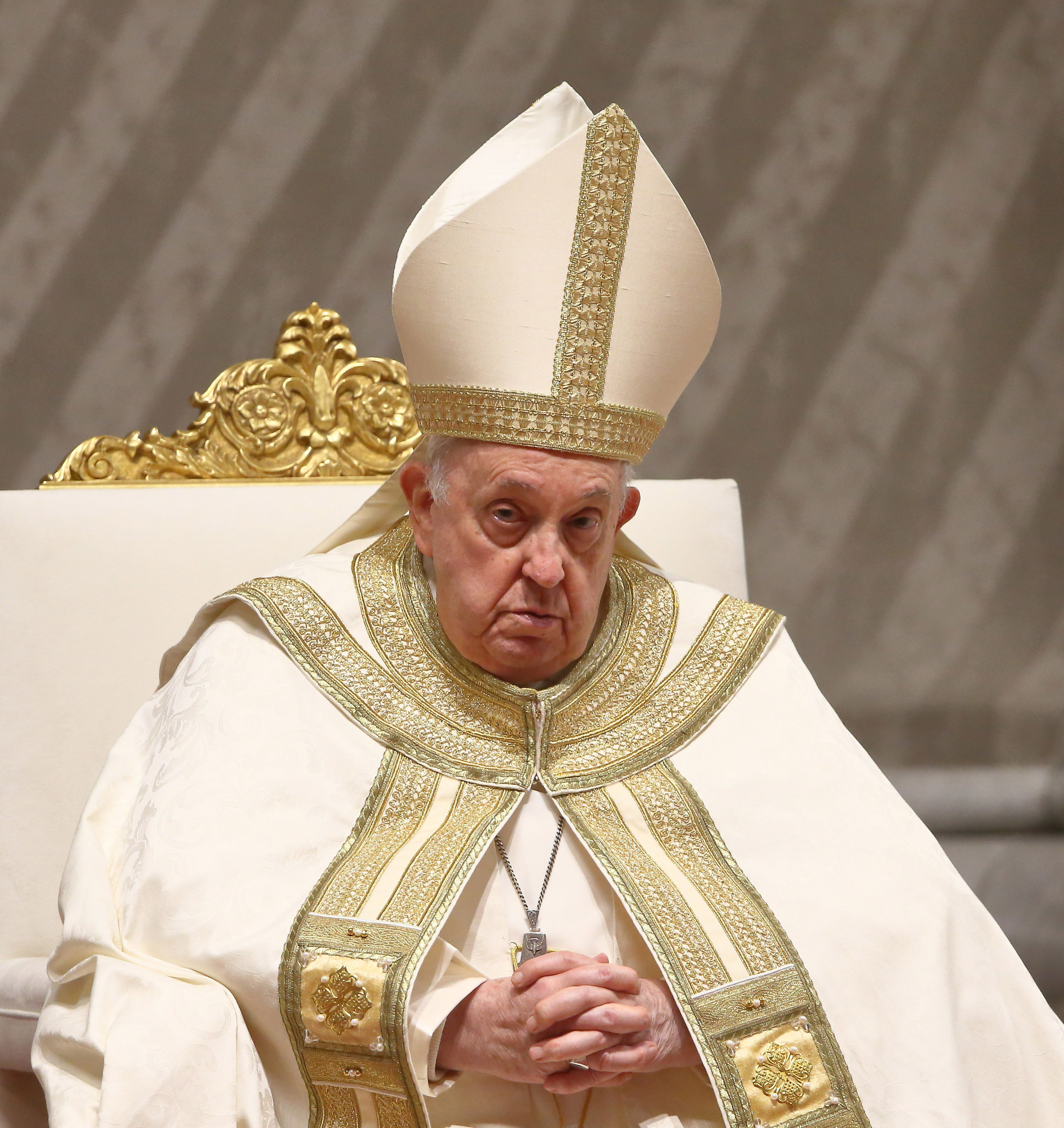
Pope Francis leads the First Vespers of the Solemnity of Mary and the traditional Te Deum of thanksgiving on December 31, 2023, in Vatican City. | Source: Getty Images
His death marked the return of deeply symbolic rituals, some dating back more than a thousand years. From the red vestments to the broken ring, every step of his farewell followed a script shaped by history, devotion, and the enduring customs of the papacy.
Simplicity and Splendor: Inside the Pope's Funeral
Pope Francis' funeral was a moment of deep emotion and global reflection. As the first Latin American pontiff and a champion of the poor, his death drew mourners from around the world to Vatican City to say goodbye.
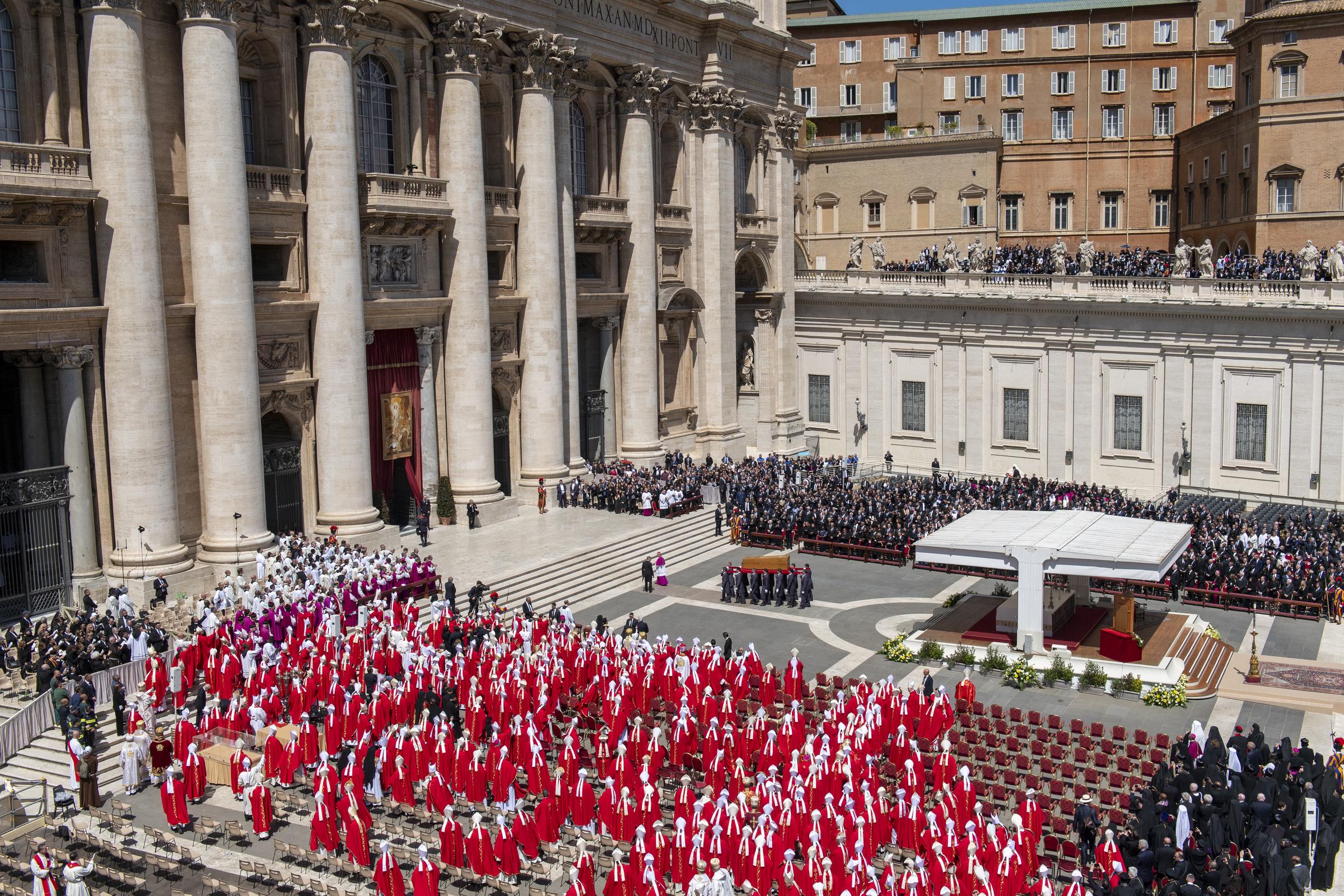
Pope Francis' coffin is carried into St. Peter's Basilica after his funeral in Vatican City on April 26, 2025. | Source: Getty Images
The rites began with his body lying in state inside St. Peter's Basilica for three days. Dressed in a white cassock and red vestments — the traditional colors for papal funerals, symbolizing martyrdom and sacrifice — he rested in an unadorned oak coffin, placed at floor level as a gesture of humility.
On Saturday morning, the funeral Mass took place outdoors in St. Peter's Square. The service opened as his coffin was carried from the basilica to the sound of hymns.
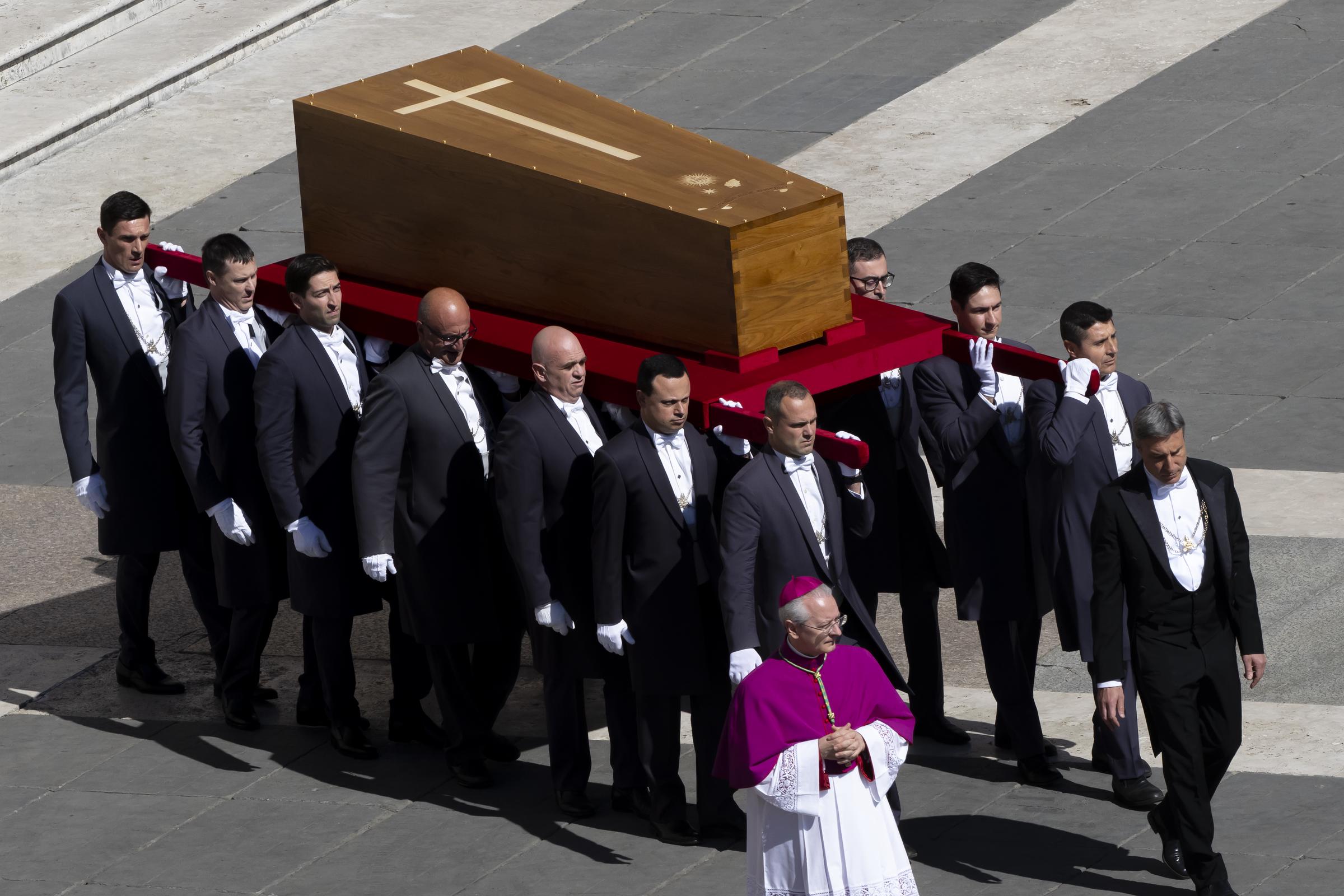
Pope Francis' coffin is carried into St. Peter's Square for his funeral at the Vatican on April 26, 2025 | Source: Getty Images
The service drew worldwide leaders. Among those attending were U.S. President Donald Trump, British Prime Minister Keir Starmer, Ukrainian President Volodymyr Zelenskyy, Prince William, French President Emmanuel Macron, German President Frank-Walter Steinmeier, and European Council President António Costa.
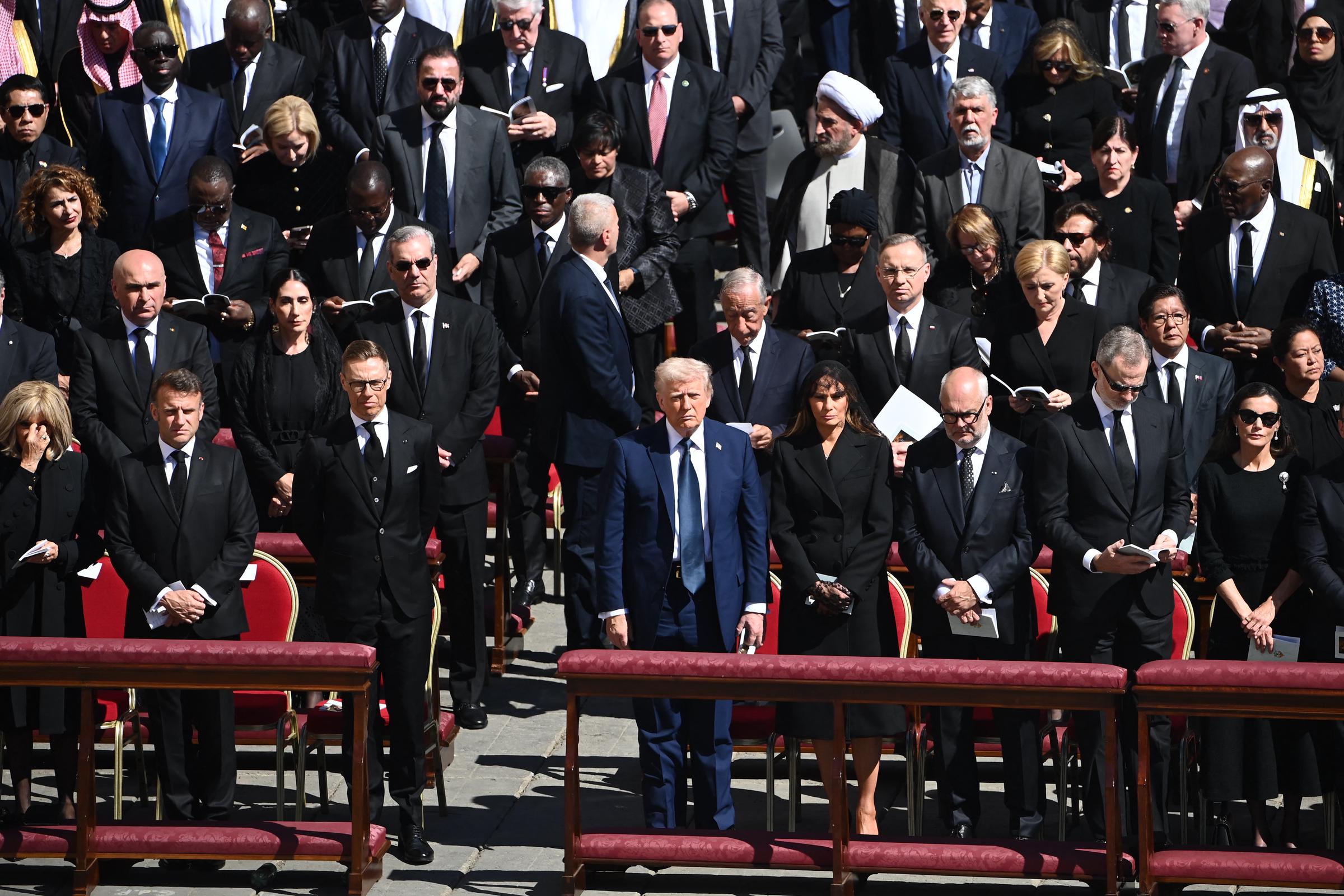
U.S. President Donald Trump and First Lady Melania Trump stand with world leaders, including France’s Emmanuel Macron and Finland’s Alexander Stubb, during Pope Francis’ funeral at St. Peter’s Square on April 26, 2025. | Source: Getty Images
Although the ceremony was solemn, moments of warmth emerged. Many young pilgrims were already in Rome for the postponed canonization of Carlo Acutis and a Holy Year event for teenagers. Some snapped photos or smiled through tears — a farewell to a pope known for his closeness to ordinary people.
After the Mass, the coffin traveled by motorcade through the streets of Rome to the Basilica of Santa Maria Maggiore — a destination the pontiff had chosen long before his death.

The Basilica of Santa Maria Maggiore in Rome, Pope Francis' chosen burial site, on April 26, 2025. | Source: Getty Images
He often visited the church to pray before the Salus Populi Romani, a Byzantine icon of the Virgin Mary cradling the infant Jesus. The image, kept in a side chapel, was among his most cherished devotions.
Following his wishes, he was not buried in the Vatican grottoes. Instead, his tomb was placed beside the statue of Mary, Queen of Peace, in a quiet side aisle of the basilica. The location reflected both his lifelong Marian devotion and his request for a private, prayerful final resting place.
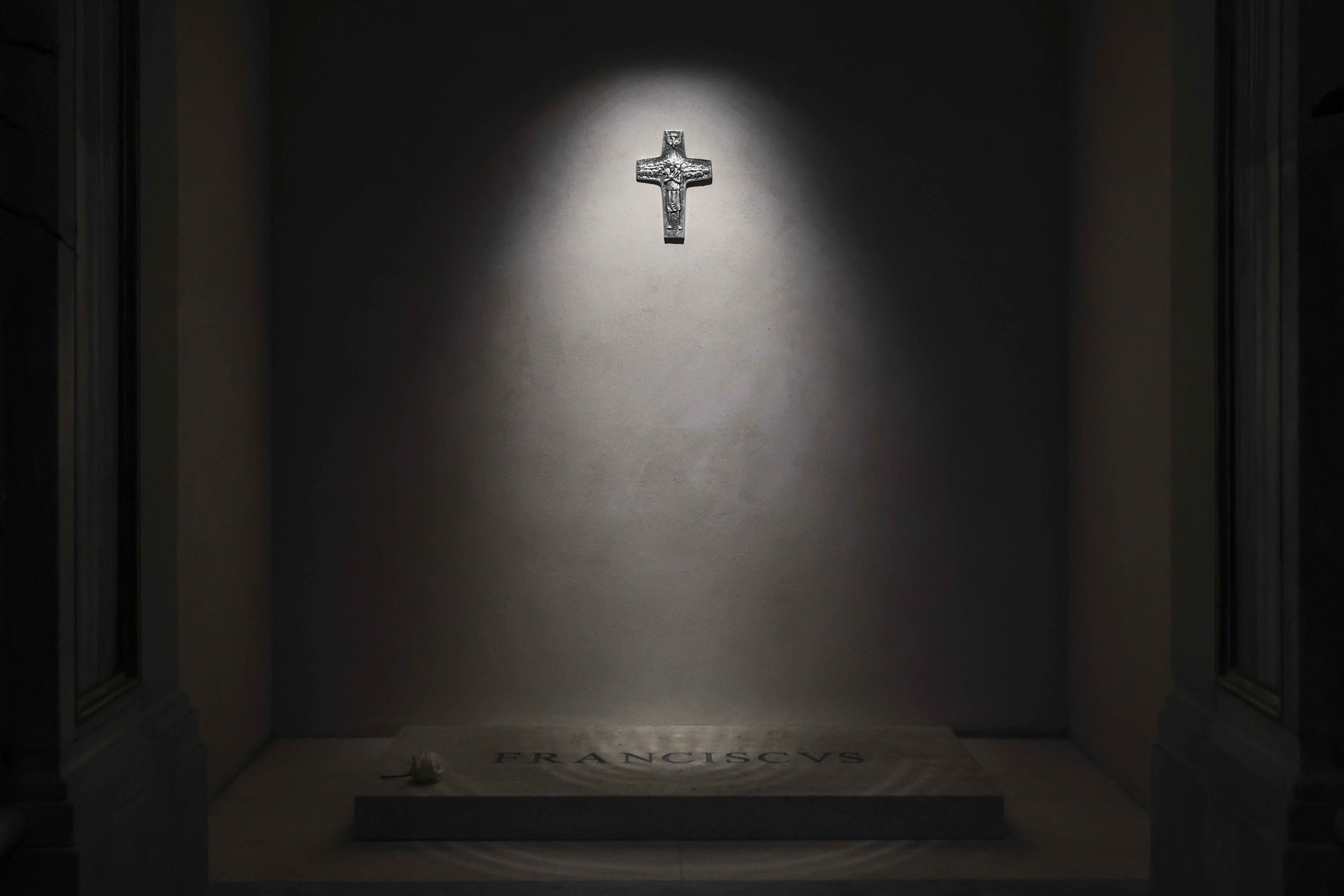
A view of Pope Francis' tomb at Santa Maria Maggiore Basilica on April 27, 2025, in Rome, Italy. | Source: Getty Images
Francis also declined the traditional triple-coffin system used in previous papal funerals. The pared-down burial reflected the same simplicity and pastoral spirit that shaped his twelve-year papacy.
Yet even as the Church honored his wishes, myths about ancient papal death rituals began to circulate once again.
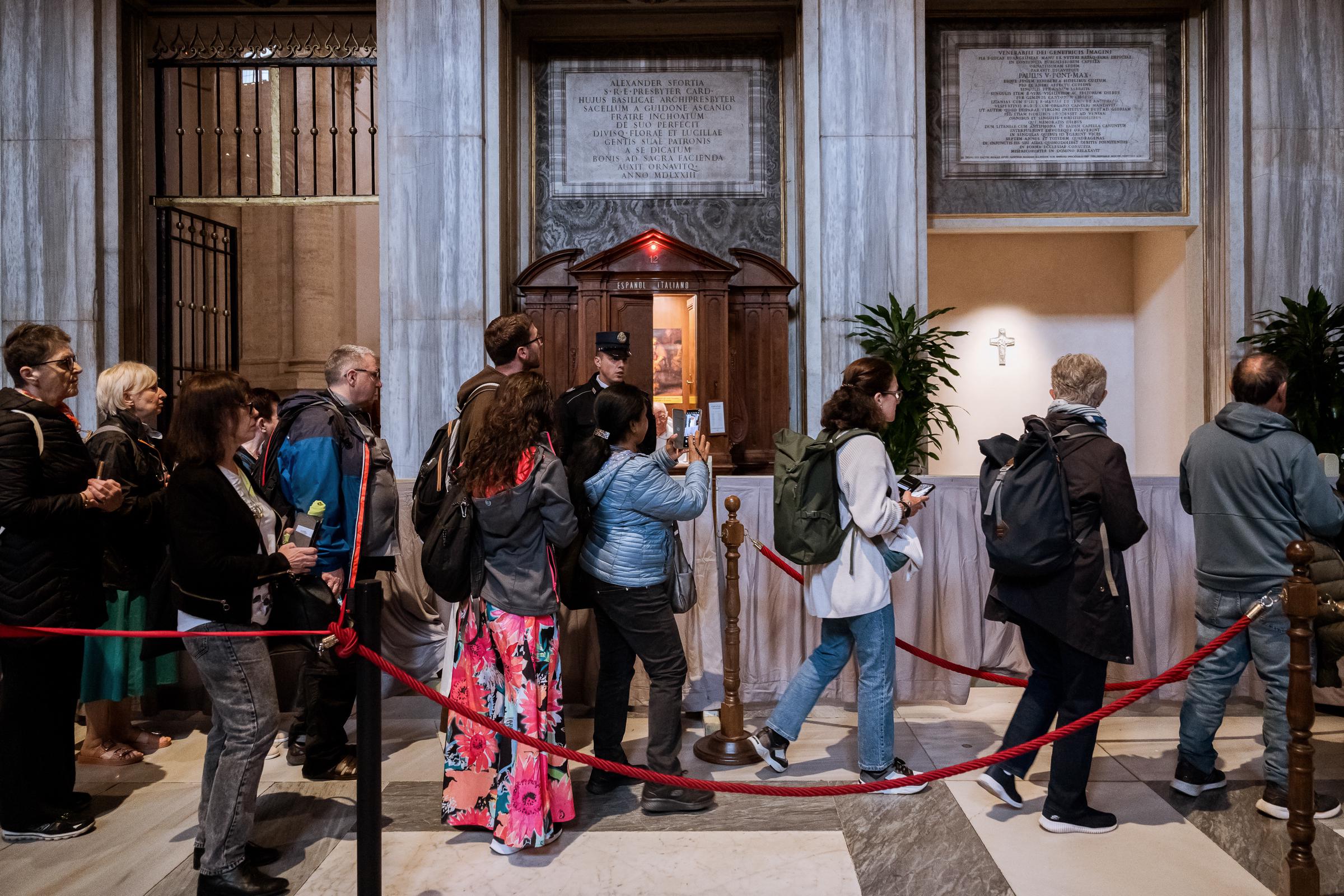
Visitors gather outside St. Mary Major Church in Rome on April 28, 2025, to pay tribute at Pope Francis' tomb. | Source: Getty Images
How Papal Death Is Really Confirmed
Over the years, a widely repeated story has claimed that when a pope dies, the camerlengo gently strikes his head three times with a small silver hammer while calling out his baptismal name — a symbolic act to confirm death. Some traditional Catholic sources, including recent reports, continue to describe this as part of the ritual.
The myth gained new attention in January 2023 after a Facebook post featured a screenshot of a tweet claiming that a special "dead-pope hammer" is used to confirm a pontiff's death.
However, experts and official records contradict this version. Professor Ulrich Lehner, a theologian at the University of Notre Dame, called it "an old tale which is not mentioned in any official text."
According to Lehner, the story likely originated in the 19th century, possibly influenced by cultural fears of premature burial, and has been widely repeated despite lacking historical documentation.
Rev. David Collins, a professor at Georgetown University, pointed out, "There is no reference to a silver hammer, the calling out of the pope's baptismal name or the smashing of rings and seals in the document," he said, referring to the 1996 constitution Universi Dominici Gregis.
The document reportedly stated, "As soon as he is informed of the death of the Supreme Pontiff, the Camerlengo of Holy Roman Church must officially ascertain the Pope's death, in the presence of the Master of Papal Liturgical Celebrations, of the Cleric Prelates of the Apostolic Camera and of the Secretary and Chancellor of the same; the latter shall draw up the official death certificate."
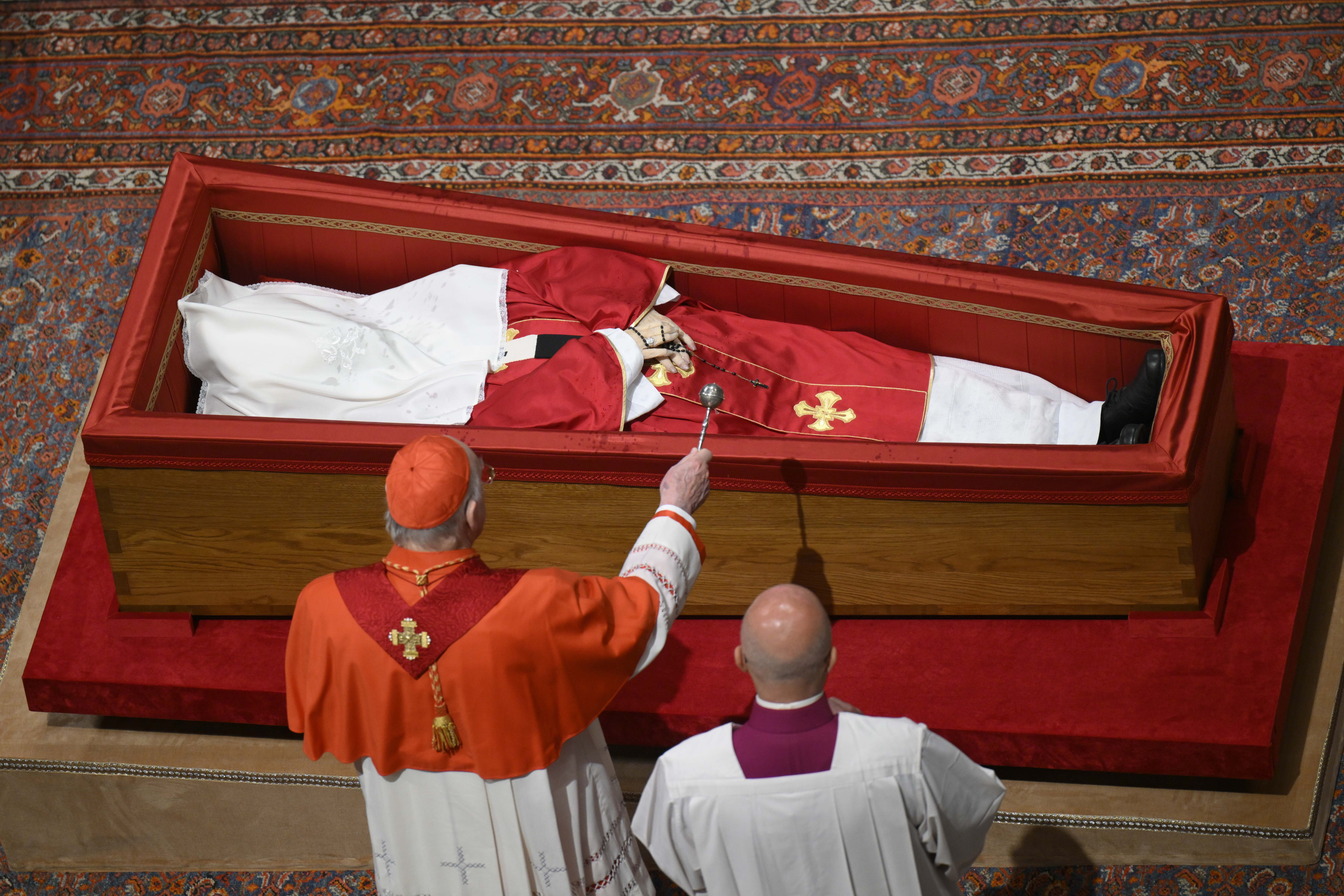
Cardinal Kevin Farrell leads the Rite of Sealing of Pope Francis' coffin in St. Peter's Basilica on April 25, 2025, ahead of his funeral. | Source: Getty Images
In Francis' case, his death was confirmed through modern medical procedures. "In this case, as in the case of the last several popes, doctors would be on hand to make the call," Rev. David explained. "The camerlengo is there to ensure this happens."
Then, following protocol, Cardinal Kevin Farrell — the camerlengo — performed the official duties required after a pope’s passing. Farrell formally declared the death in Latin by saying, "Vere, Franciscus mortus est," which means "Truly, Francis is dead." He did this in the presence of Vatican officials.
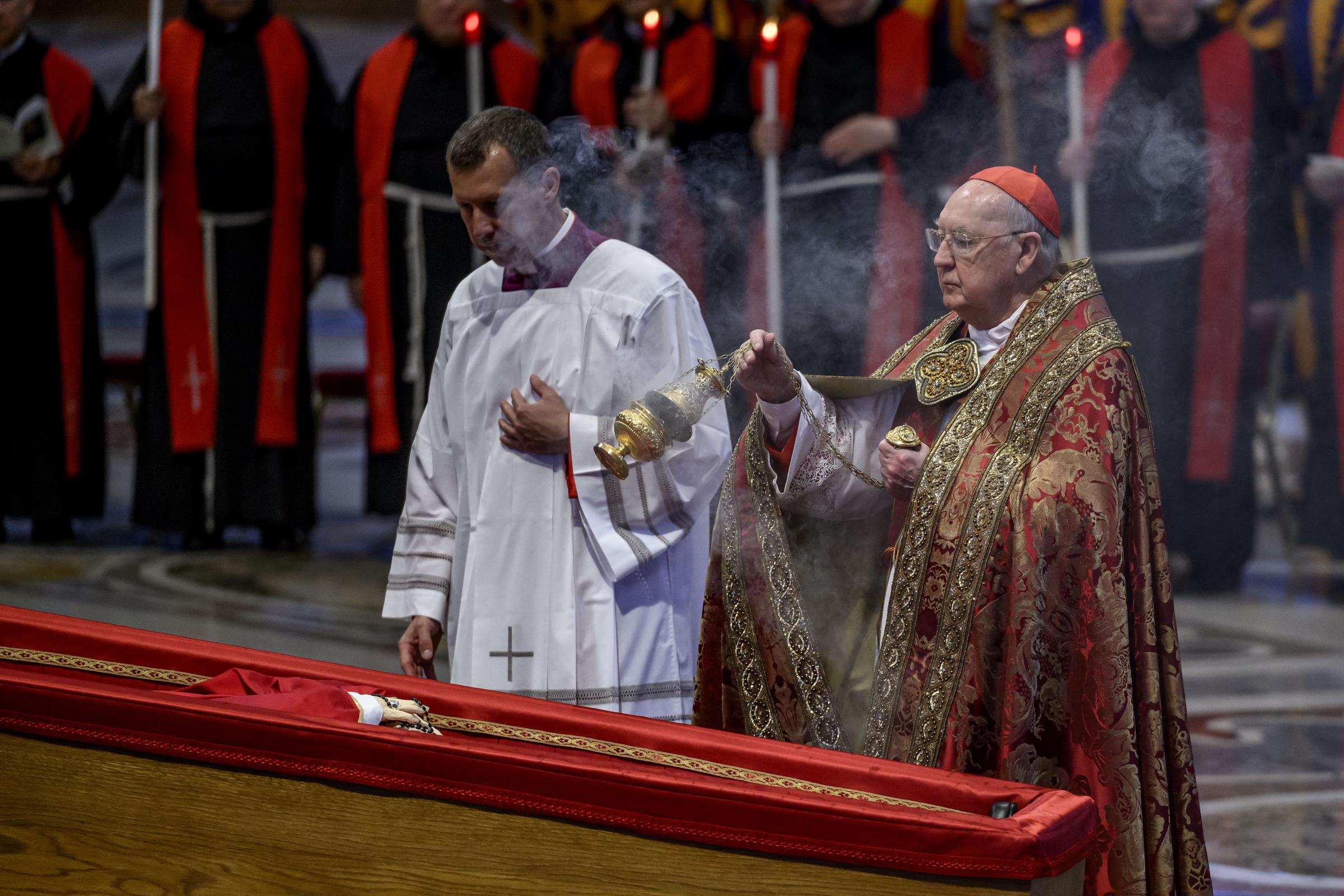
Cardinal Kevin Joseph Farrell holds incense next to Pope Francis' coffin in St. Peter's Basilica on April 23, 2025, in Vatican City. | Source: Getty Images
He also secured the pope's private rooms, checked for a last will and testament, inventoried items, and authorized the official death certificate. The papal apartment was sealed, and a guard was posted outside. These actions marked the beginning of the papal interregnum — the period when the seat of the pope is officially vacant.
With the pope's passing confirmed, attention shifted to the ancient symbols of his authority, and what had to be done with them.
Why the Pope's Ring Had to Be Destroyed
One of the most solemn traditions after a pope's death is the destruction of the Fisherman's Ring — a centuries-old symbol of papal power. The practice began in the 13th century, when the ring and a seal called the bulla were used to stamp official documents. To prevent forgery, both had to be destroyed after the pope died.
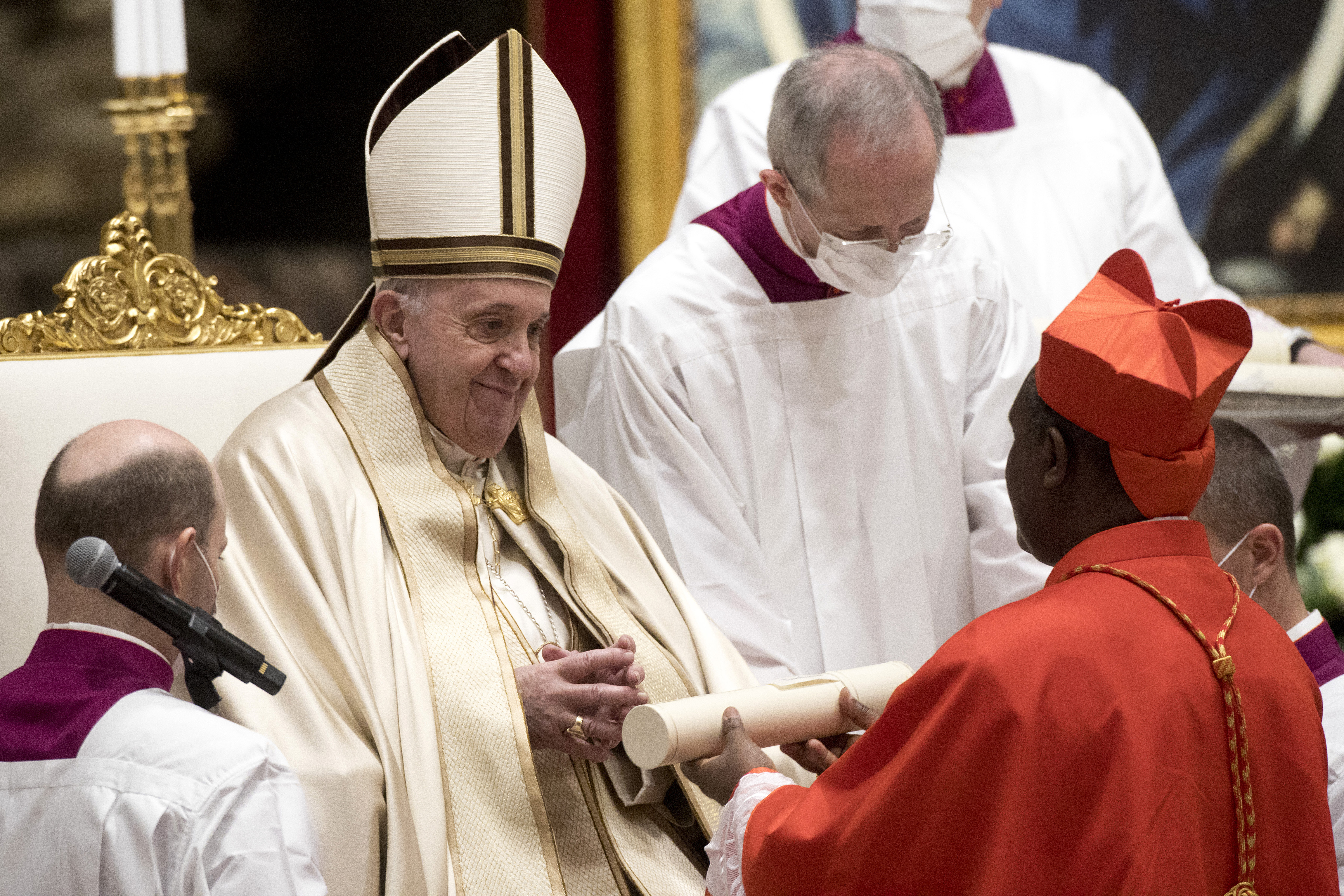
Pope Francis appoints Archbishop Antoine Kambanda of Kigali, Rwanda, as Cardinal during a Consistory at St. Peter's Basilica on November 28, 2020, in Vatican City. | Source: Getty Images
CNN Vatican correspondent Christopher Lamb described the ritual aptly, "It's the equivalent of taking the login details away from a social media account." In eras before passwords, the ring's destruction protected the Church from false decrees and ensured a clean break from the previous pontificate.
Traditionally, the ring was smashed with a ceremonial hammer. However, following the precedent set during Pope Benedict XVI's resignation, Cardinal Farrell ceremonially defaced Francis's ring by carving a deep cross into its surface. This gesture preserved the dignity of the relic while ensuring it could no longer function as a seal of authority.
The ring itself reflected Francis' values. Instead of commissioning a new piece, he chose a gold-plated silver ring that had belonged to the late Archbishop Pasquale Macchi, secretary to Pope Paul VI. The reused ring spoke volumes about his commitment to modesty and sustainability.
For daily wear, Francis often replaced the Fisherman's Ring with a plain silver band he had worn since his time as Archbishop of Buenos Aires, quietly expressing his view that pastoral service mattered far more than ceremonial grandeur.
With the symbols of papal power respectfully retired, the Church turned toward the urgent work of choosing a new leader.
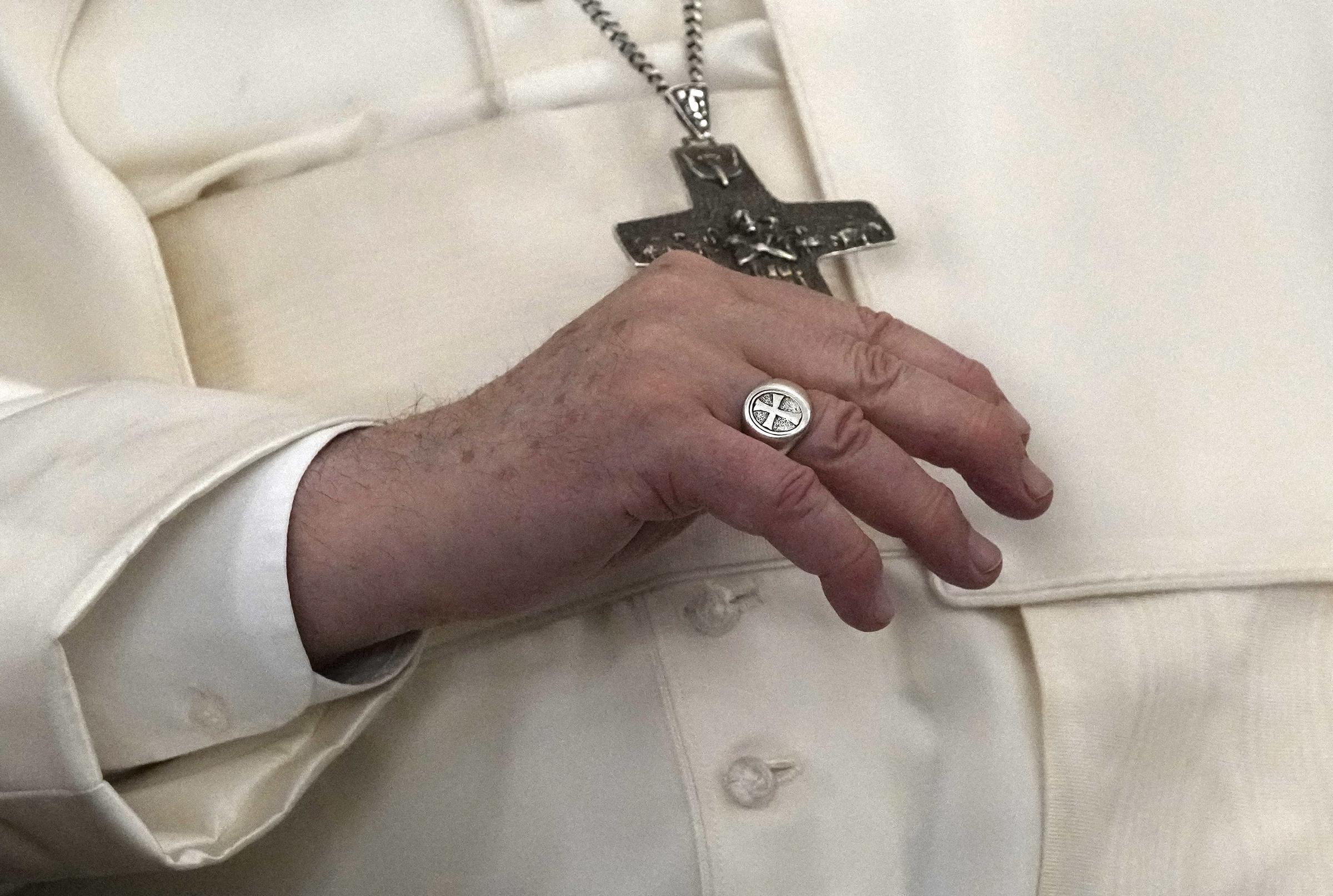
Pope Francis's ring is visible as he sits during his welcome ceremony at the Presidential Palace in Nicosia on December 2, 2021. | Source: Getty Images
How the Cardinals Will Choose a New Pope
Preparations for the conclave began swiftly after the funeral. Although the date was not immediately announced, Church law requires the conclave to begin within 15 to 20 days of the pope's death.
It was later confirmed that the conclave would open on May 7, drawing 135 cardinal electors from around the world — the majority of whom were appointed by Pope Francis during his 12-year reign.
The conclave is a gathering of intense secrecy and sacred tradition. On the opening day, following Mass at St. Peter's Basilica, the cardinals will process into the Sistine Chapel. Once inside, the bronze doors will close behind them, sealing them off from the world.
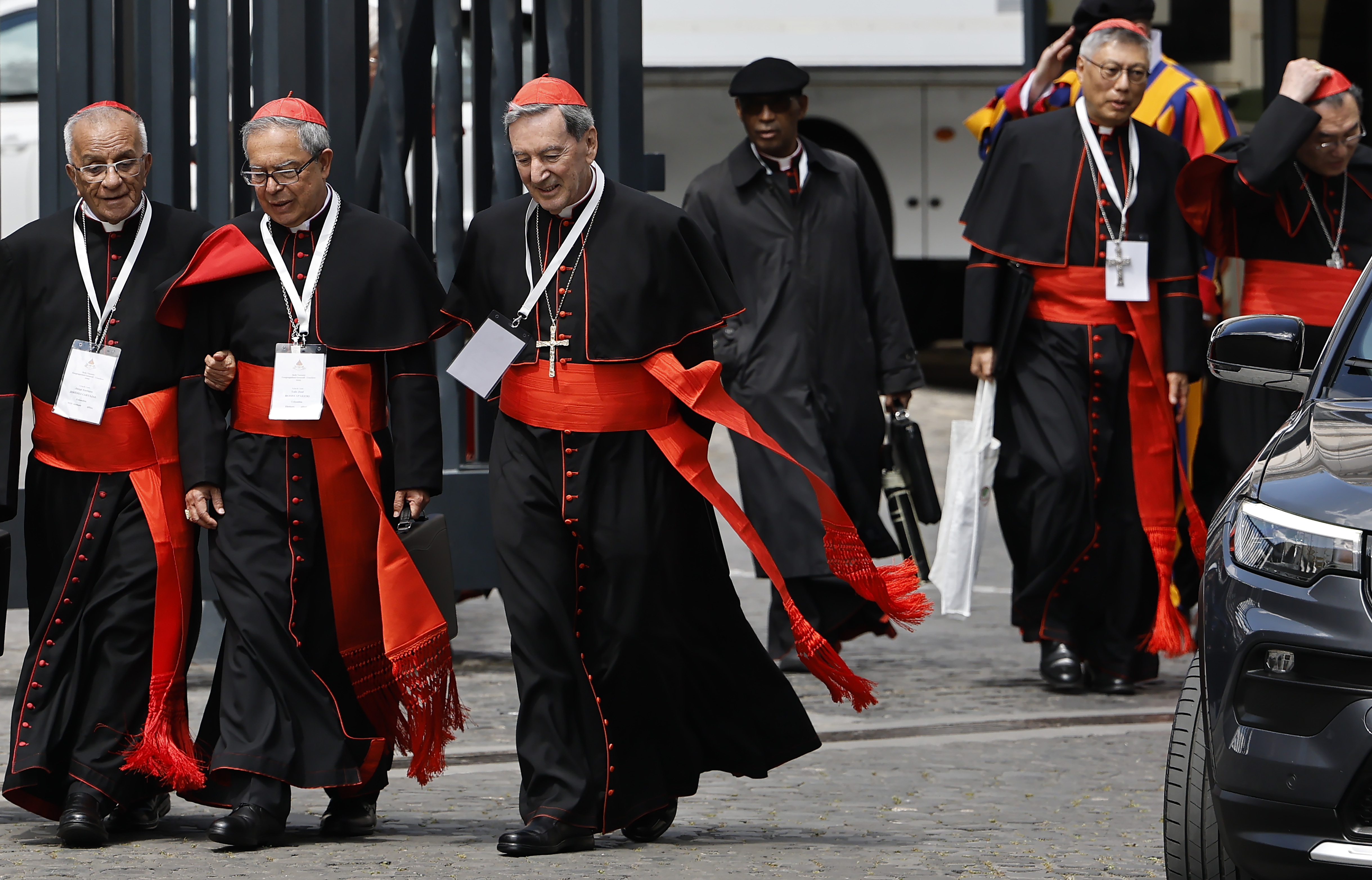
Cardinals Jorge Enrique Jiménez Carvajal and Luis José Rueda Aparicio from Colombia leave a meeting with other cardinals on April 28, 2025, in Rome, Italy. | Source: Getty Images
The voting process is meticulous. Each cardinal writes the name of his chosen candidate on a ballot, which is then pierced with a needle and threaded for counting. After the count, the ballots are burned in a special stove. Black smoke means no consensus; white smoke — accompanied by the ringing of bells — announces a new pope.
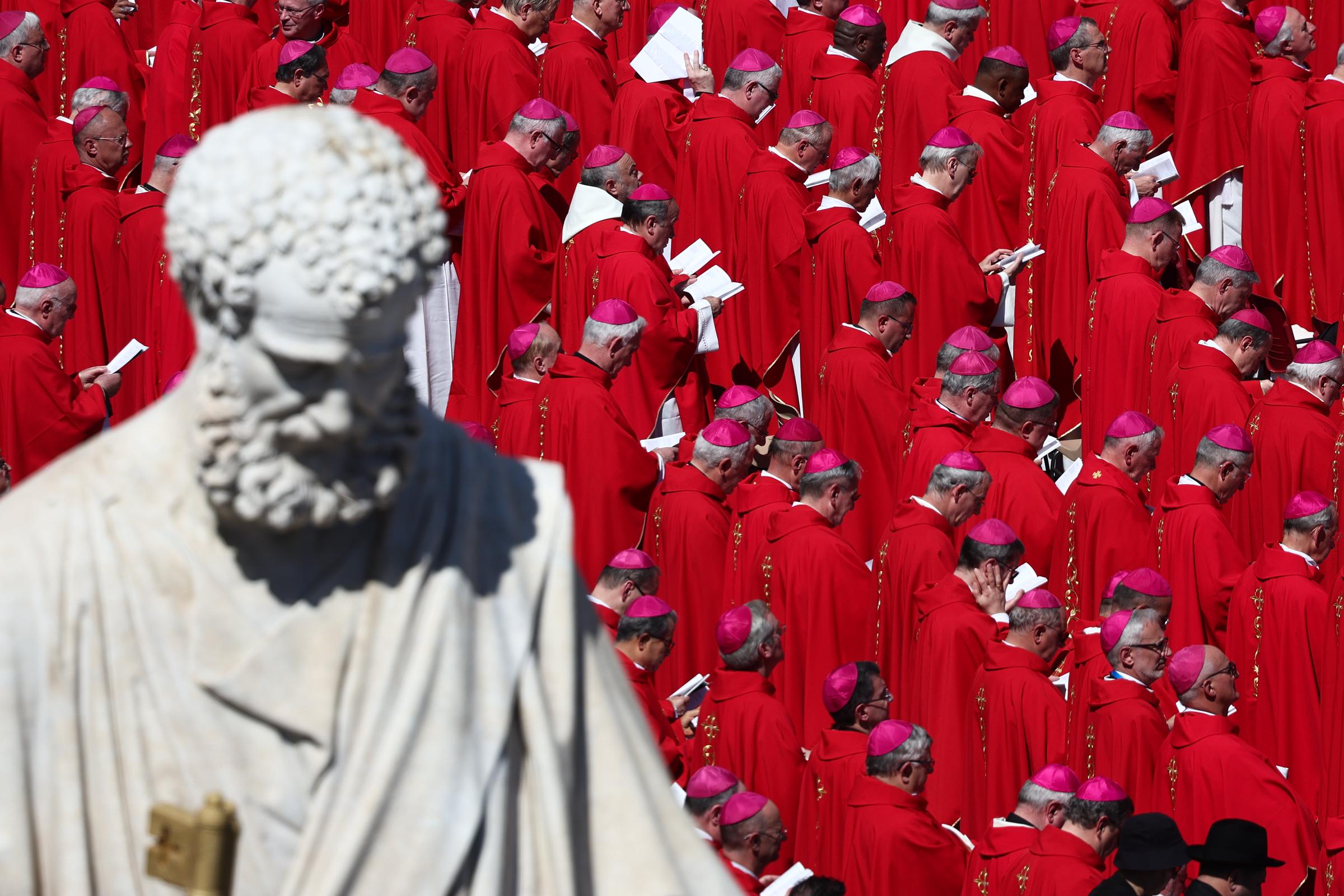
The cardinals attend the funeral ceremony of Pope Francis at St. Peter's Square in Vatican City on April 26, 2025. | Source: Getty Images
Any baptized Catholic man is technically eligible to become pope, but since 1378, only cardinals have been elected. The new pontiff must receive at least two-thirds of the vote from the cardinals under 80 years old.
Once a consensus is reached, the chosen cardinal accepts with the word "Accepto" and takes a new papal name. Moments later, the world hears the iconic announcement, "Habemus Papam," which means, "We have a pope."
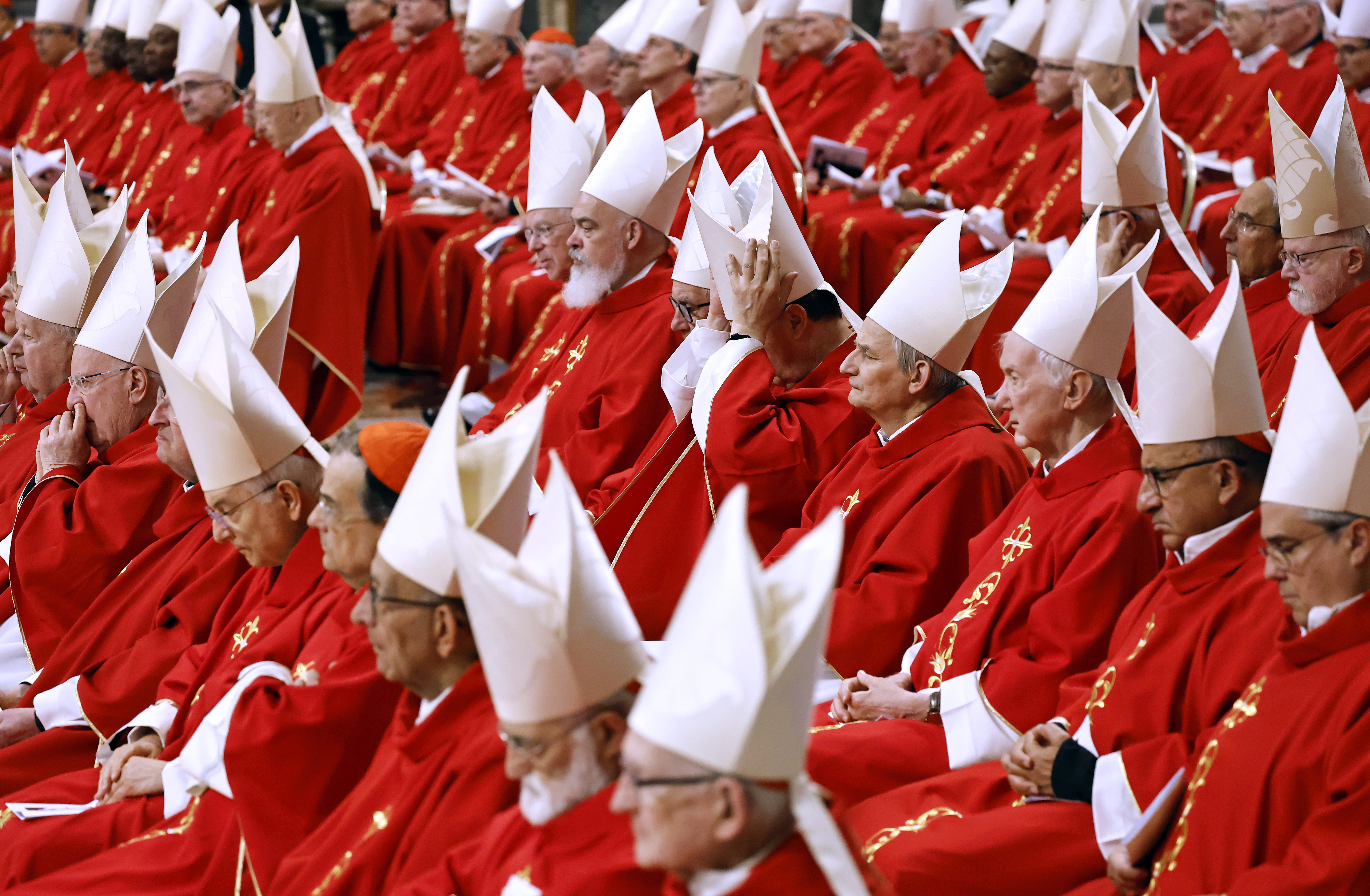
Cardinals attend the third Novemdiales mass for Pope Francis in St. Peter's Basilica on April 28, 2025. | Source: Getty Images
As the Church now prepares to choose a new leader, it is worth remembering the symbolic choice Francis himself made when he accepted the papacy — a decision that would come to define the spirit of his reign.
The Story Behind the Name 'Francis'
For Pope Francis, the moment of inspiration came in the Sistine Chapel itself, just after the decisive ballots had been cast. During his first audience with journalists in March 2013, Pope Francis recounted the scene.
As the voting ended and applause signaled his election, Cardinal Claudio Hummes of Brazil leaned close, embraced him, and whispered, "Don't forget the poor." Those few words, spoken in the intense, historic atmosphere of the conclave, left an immediate and profound impression.
"Immediately I thought of St. Francis of Assisi. Francis was a man of peace, a man of poverty, a man who loved and protected creation, the late pope told the gathered reporters.
These values — compassion for the poor, simplicity of life, and care for the Earth — resonated deeply with Jorge Mario Bergoglio, the humble Jesuit from Buenos Aires who had long championed the marginalized.
During his first conversations after the conclave, Francis shared with humor that some cardinals had joked about other names he might choose. One suggested Hadrian, after Hadrian VI, a pope known for reforms. Another proposed Clement, referencing Clement XIV, who had once suppressed the Jesuits.
Francis laughed at the suggestions but made it clear that only one name had truly come to him in that pivotal moment: St. Francis of Assisi. His choice broke with long-standing papal traditions, where new popes often selected names honoring past pontiffs, theologians, or rulers of the Church.
Instead, he aligned himself with a saint known for humility, mercy, and a deep sense of brotherhood with all creation. "How I would love a Church that is poor and for the poor," he said, sharing his vision of a faith community less tied to power and privilege.
He became the first pope ever to honor St. Francis of Assisi — a small but powerful symbol of change. From the start of his papacy, Pope Francis lived by the spirit of that name.
He turned down the grand papal apartments and moved into a modest guesthouse at Casa Santa Marta. He washed the feet of prisoners, stood with refugees, and urged world leaders to take action against climate change.
In every public act, he echoed the values of the saint he admired: simplicity, compassion, and care for the vulnerable. That same spirit shaped his decisions even in death, choosing a simple wooden coffin, a plain grave, and funeral rites that reflected a life of service rather than grandeur.
